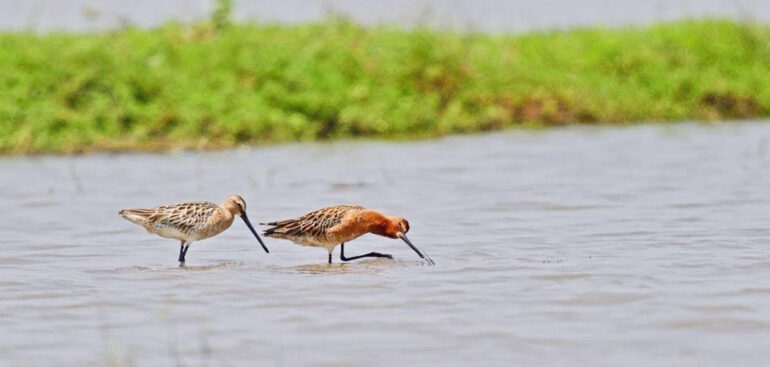
Diverse flora and fauna at Tam Giang Nature Reserve – Source: https://baotainguyenmoitruong.vn/
Tam Giang – Cau Hai Wetland Nature Reserve was established under Decision No. 495/QD-UBND dated February 20, 2020 of the People’s Committee of Thua Thien-Hue.
With a total area of 2,071 hectares, including O Lau sub-zone (1,270 hectares), Con Te – Ru Cha sub-zone (187 hectares) and 23 aquatic resource protection areas (614 hectares). Of which, strictly protected sub-zone: 799 hectares; ecological restoration sub-zone: 1,242 hectares; service – administrative sub-zone: 29.5 hectares.
The Tam Giang – Cau Hai lagoon wetland system stretches 68 km along the coast of Thua Thien-Hue province in the Northwest – Southeast direction, located in the territory of 5 districts: Phong Dien, Quang Dien, Phu Vang, Phu Loc and Huong Tra town.
This is a typical wetland lagoon for tropical monsoon conditions, the largest in Southeast Asia. The lagoon has a very high biodiversity value, according to statistics, the flora includes 221 species of phytoplankton, 46 species of seaweed, 18 species of higher aquatic plants including 7 species of seagrass and 11 species of freshwater grass, 31 species of higher plants including 7 species of mangrove plants. The fauna here includes 66 species of zooplankton, 46 species of benthic animals, 230 species of fish and 73 species of birds, of which 34 species are migratory and 39 species are resident.
Tam Giang – Cau Hai lagoon is one of the rare representatives of the tropical coastal ecosystem with a complex and diverse environment; this area is a gathering place for migratory waterfowl with a population of over 20,000 individuals in winter.
Not only is it valuable in terms of resources, especially biodiversity, this lagoon also has an extremely important ecological function, playing a huge role in the natural balance of the coastal area and the socio-economic development of the region. The lagoon ecosystem provides the main source of nutrition for about 500,000 people living in 44 communes in 5 districts and towns surrounding the lagoon.
Source: Department of Natural Resources and Environment



